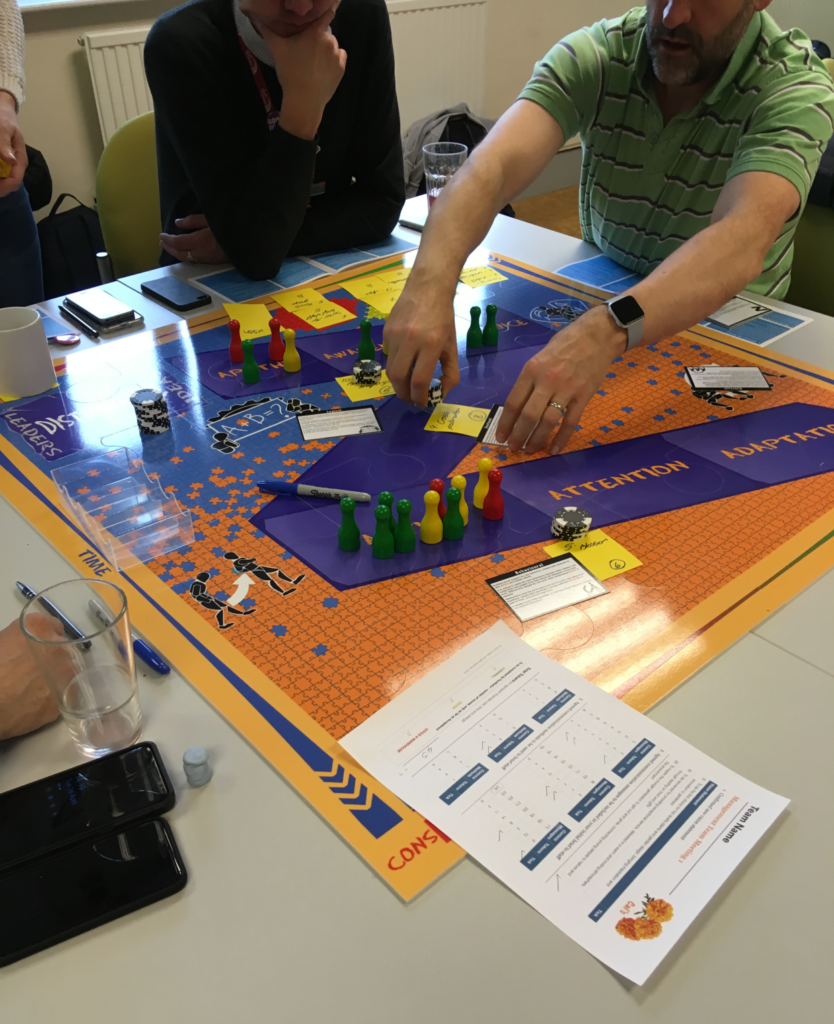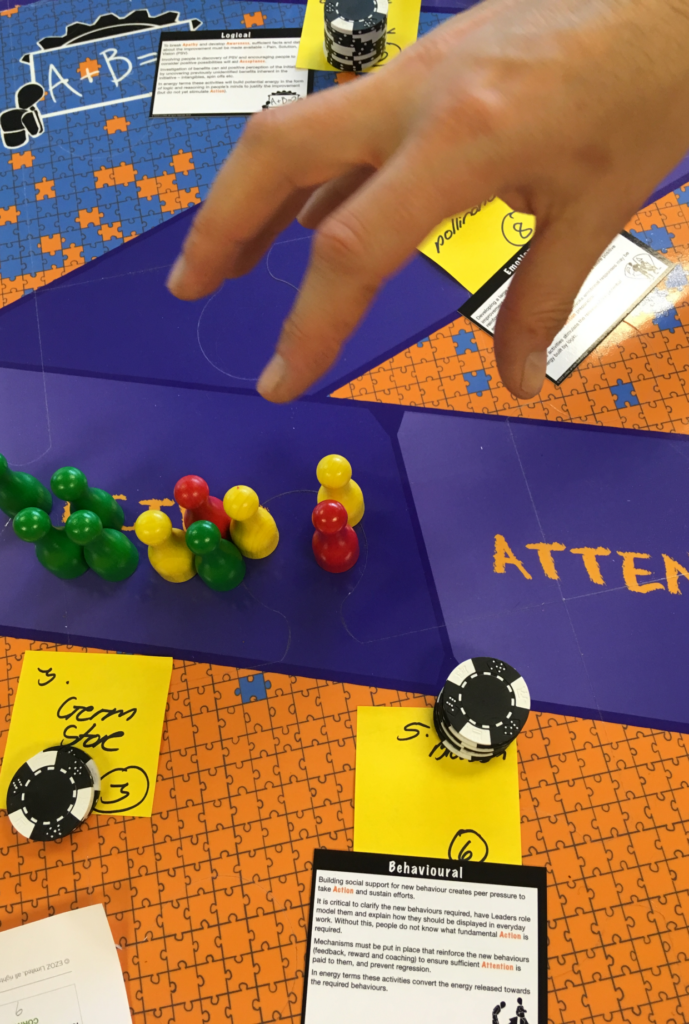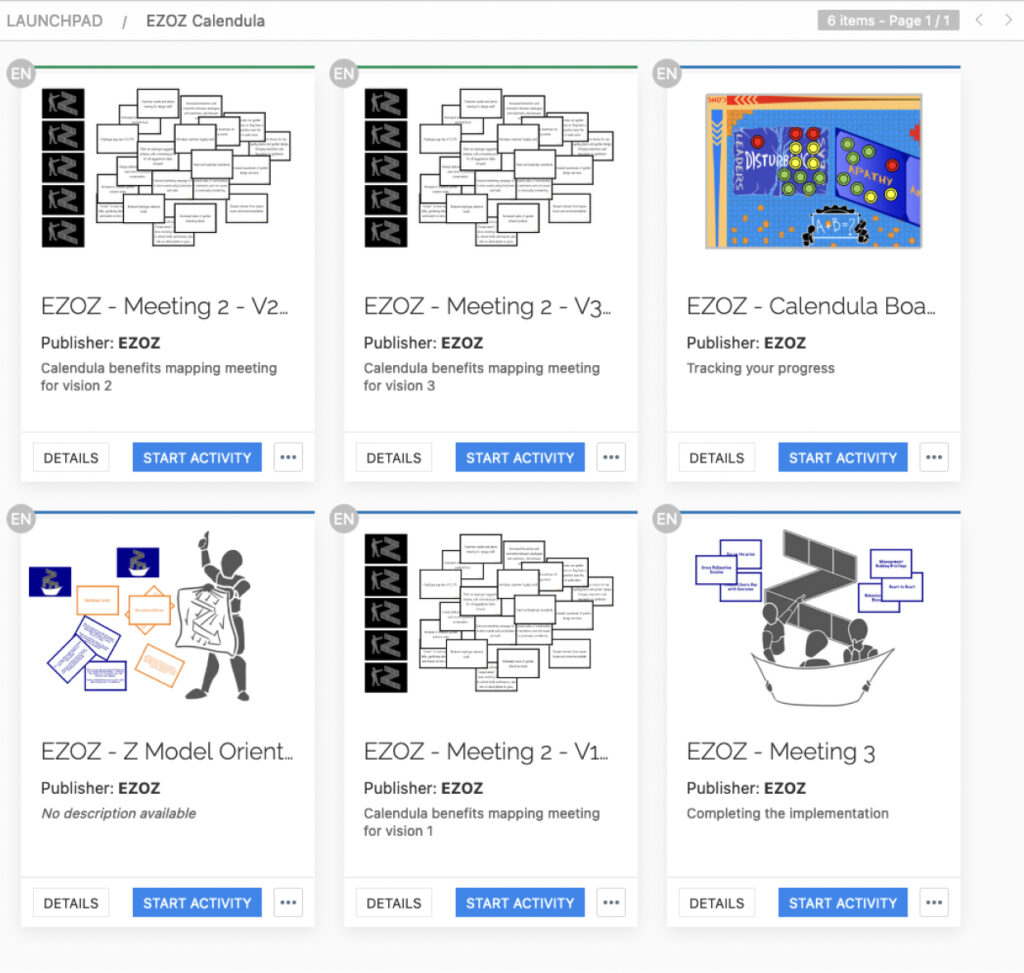Who are Richard and Breeda?
Describe yourselves in a few words.


Scottish, chemist, production manager, leadership trainer, organisational development consultant, father of three grown ups, guitarist, tennis player (permanent beginner), my focus is promoting effective leadership of transformation and improvement in organisations in harmony with employees.


English, mechanical engineer, production manager, organisational development manager, behavioural development consultant, mother of three – not quite grown up yet, gardener, baker and runner. I tend to focus on helping leaders have a positive impact on all the people around them and ultimately making a stronger functioning organisation.
What is EZOZ?
EZOZ was formed from our two other companies – OrgZoo – a specialist in change management and creators of The Z Model ® and Energise Zone – facilitation and team behavioural dynamics focused consultancy.
We work with mainly large organisations that have to implement complex, critical changes and see the effective engagement of people as vital to achieving this. We have worked all over the world but in current times are more virtual. Clients come mainly from the energy, transportation, local government and manufacturing sectors.
Please describe your training portfolio
Three main areas
- Leadership Development – Creating role models of purposeful actions and positive behaviours that inspire followership. We specialise in developing leadership skills in collaboration and influence in a measurable way using our BIQ ®, Behavioural Interaction Quotient.
- Team Performance – Placing trust, resilience and feedback at the heart to maximise commitment and performance. We utilise our POSTER ™ tool to measure and track team progress.
- Organisational Change – Putting engagement at the centre of improvement initiatives to create energy and deliver
lasting change. We use The Z Model ® and our proprietary Business Improvement Method ( aka The Method) to support learning transfer.
We find that although the three areas are our foundations each client’s needs are a unique blend of both content and delivery.
We utilise our long, varied experience and mainly our own intellectual property as well as some licensed IP to support our clients.
What are your clients looking for?
Practical leadership and change experience in addition to change and facilitation skills. Also positive energy coupled with learning approaches that are creative and fun. Often they want advice and coaching for specific issues as well as programmatic development
What’s your approach to keeping delegates engaged?
We are adaptive trainers – that is to say, we focus on observing the needs and preferences displayed by individuals then adjust and give time to each to ensure everyone has the unique experience they need. We have tended to use “gamification” as a way to engage, keep energy high and pace fast for those who need that with periods of more personal support for those who are more reflective. We endeavour to create a safe climate of trust that allows delegates the chance to be straight with us on their needs and we adapt to provide meet them.


What do you consider to be the “secret” of successful training delivery?
You should have trainers who really know what they are talking about and have real experience as opposed to an idealised image of how to apply a skill or concept. People only learn when they are positive and energised and working hard on modelling that to create the right climate. This means we stick to what we have real experience in when it comes to training.
What was the impact of the pandemic on your business?
We were incredibly fortunate in that we were able to support our clients who wanted to avoid delay and could utilise technology to engage staff at home for training and engagement workshops. We attended a virtual session from the CIPD UK Conference where Dr David Rock, of Neuro Leadership fame, challenged trainers not to simply duplicate virtually their face-to-face offers. Instead, David proposed the application of the neuroscience of engagement and attention to rethinking completely how to use remote delivery to do things even better, faster, as well as more conveniently. We really applied ourselves to that challenge – confronting our own biases and beliefs to achieve improved outcomes in a new way.
People learn in different ways and at varying speeds. What’s your perspective on remote training delivery?
Driven by the challenge to make interventions even better virtually than they were face to face we learned a lot in 2020/21. Initially, our struggle was managing the technology as well as the content and facilitation – flying solo on an intervention. Talking to colleagues in different companies we found they often had 3 people in a virtual session – a content and discussion leader, someone operating questionnaires and chat facilities as well as a technical person making sure everything stood up and was working. By the time we had that feedback we were beginning to master the solo pilot approach – multiple screens and careful set-up with delegates were key learnings. We found we could get better engagement, waste less time and get excellent responses and feedback from delegates on every intervention. Their journey home was a lot quicker as well – i.e. no journey.
What are the key challenges with this approach?
Virtual sessions of real engagement (we eventually found 10:1 was the absolute maximum delegate to trainer ratio) meant we could see delegates’ faces constantly. As behavioural observation specialists, we were burning a lot of energy seeing them all on screen and trying to adapt to individual needs, this was quite exhausting at times.
Really being responsive to unplanned breaks, as well as planned ones and shortening the traditional ‘training day” by starting later and finishing earlier, caused us concern at the start even though we knew it was needed for virtual learning. We got much more ruthless about short content inputs, getting quickly to practical tasks, in-the-moment questionnaires to speed up delegate input and allow quieter people to engage, cameras off for 5 mins for reflection – those who don’t want this have 5 mins to make more coffee, using short recap animations to change the format for delegates – all this helped us use time much more efficiently, effectively in a way that suited individual needs.
What technologies/software do you prefer for live training? Why?
We find Zoom the best – early concerns people had related to Zoom security evaporated quickly. It is much better for us than say Teams for training and engaging in different ways – we especially love the Poll facility on Zoom and used that a lot. We came across Colltrain when trying to deliver Action Centred Leadership remotely and it was a life saver! The ACL tasks on Colltrain we could not have imagined being better than the face-to-face versions and yet in many ways, they were better and slicker.
What about your experience with Colltrain? What’s the key benefit of using it?
We met Colltrain at the start of 2021 when we used their platform for virtual tasks used in action-centred leadership training. We were very impressed by the stability, accessibility and ease of use of the Colltrain collaborative tasks and tools.


Colltrain then built a virtual version of our change simulation tabletop game that we use to introduce people to the Z Model and The Method – (these are our proprietary change tools). This allows us to provide the same fun and interactive experience to remote teams we previously used with co-located teams face to face.


Working with Marian, Nicole, Roxanne and the whole Colltrain team was a pleasure. Since they are trainers themselves they quickly absorb the purpose and mechanics of the tasks they are “virtualising” and offer insights and potential improvements, as well as completing the work very efficiently and effectively. I wholeheartedly recommend the Colltrain virtual working suite of facilitation and training tools to external and internal consultants/ trainers in the management development field.
What’s your advice/recommendation for other trainers that struggle to make the transition from in-class to remote delivery?
Facilitation skills are essentially the same as face-to-face or remote so if you are an effective facilitator already you are halfway there.
- Sharpen up your content – no wasted input.
- Re-design sessions with regular delegate inputs using chat, polls, paired breakouts, and Q&A pauses.
- Chunking everything into 10-15 min blocks rather than thinking in 90-minute sessions.
- Don’t be frightened to have more breaks than normal – you can see everyone’s face so use that data to adapt.
- Remember delegates are at home with things going on and whilst we advise them to find a learning space in advance be patient with them and their technology – if a person drops out just wait for them to reconnect.
Address fears of technical reliability
- Invest in the best broadband you can get and use a direct ethernet connection rather than WiFi for better stability and performance.
- Invest in the best computer (not laptop) you can afford – we went for iMacs with a built-in high-quality camera.
- Use a green screen for a professional backdrop if you do not have a nice background wall in your workspace.
- We would also strongly suggest a separate room if you have space at home or a room free of other people.
Talk to Colltrain if you have specific tasks that you wish to be made virtual using a stable, usable and proven platform that really works and participants appreciate.







